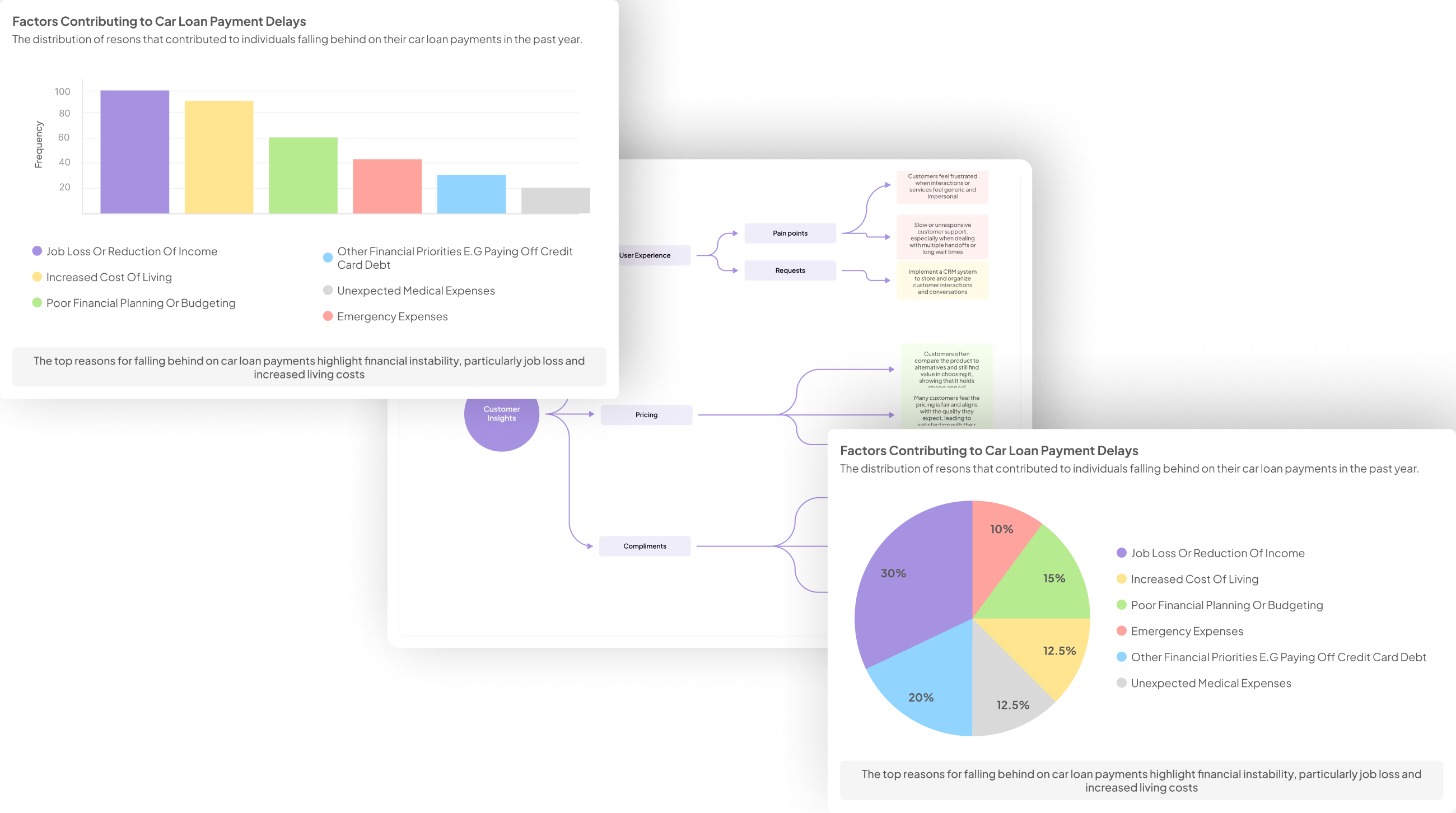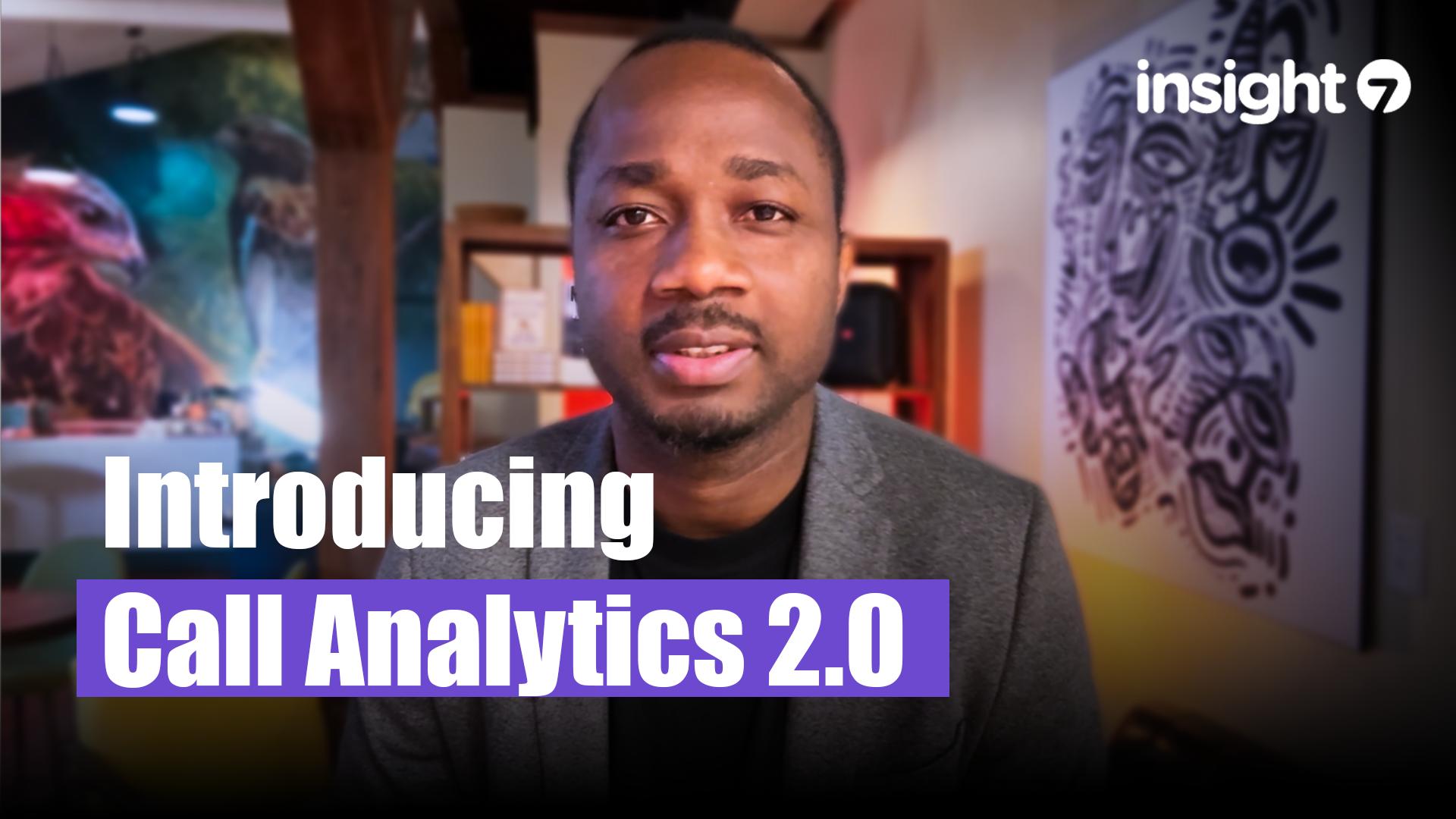Best AI tools for extracting themes from prospect interviews
-
Bella Williams
- 10 min read
In today's fast-paced business environment, understanding customer perspectives through interviews is crucial. Interview Theme Analysis delves into the patterns and insights revealed during these conversations, aiding organizations in making informed decisions. By examining themes from various interviews, companies can uncover trends that may not be immediately evident in raw data.
The process begins with transcription and organization of interview content, which allows for efficient identification of recurring themes. Through various AI tools, data from these interviews can be synthesized into actionable insights. This transformation not only enhances the understanding of customer needs but also supports strategic planning. Engaging with this analysis empowers companies to respond effectively to market demands and stay ahead of the competition.
Generate visualizations from your qualitative data. At Scale.

The Role of AI in Interview Theme Analysis
AI plays a transformative role in Interview Theme Analysis, streamlining the extraction of valuable insights from qualitative data. As organizations conduct interviews, they face the challenge of sorting through large quantities of information to identify recurring themes. AI tools can efficiently analyze this data, quickly pinpointing key trends and sentiments that emerge during conversations with prospects.
One significant advantage of employing AI in this context is its ability to synthesize information across numerous interviews. By aggregating data points, AI algorithms can reveal broader patterns that humans might overlook. Additionally, these tools can generate summarizations and categorize themes, making it easier for teams to prepare actionable reports based on their findings. Ultimately, integrating AI into Interview Theme Analysis enhances clarity, accuracy, and speed, leading to more effective decision-making based on customer insights.
Benefits of Using AI for Theme Extraction
AI offers numerous advantages for Interview Theme Analysis, significantly enhancing the quality and speed of data evaluation. First, AI tools can process large volumes of transcripts quickly, allowing researchers to identify themes and trends in mere moments. This efficiency saves time compared to traditional methods, where analyzing substantial interview data can take days or weeks.
Additionally, utilizing AI minimizes human error in data interpretation. By applying algorithms designed to recognize patterns, AI reduces bias and increases the reliability of insights drawn from interviews. Researchers can gain consistent and objective feedback, essential for informed decision-making. Furthermore, advanced visualization features in AI tools provide an intuitive understanding of complex data sets, enabling teams to communicate findings effectively.
Overall, integrating AI into theme extraction leads to a more streamlined, accurate process, fundamentally changing how organizations approach their interview analysis.
Challenges in Traditional Methods
Traditional methods for interview theme analysis often fall short in several key areas, making it challenging for organizations to derive meaningful insights effectively. Firstly, manual analysis is incredibly time-consuming. As interview data grows, sifting through countless conversations to extract themes becomes an overwhelming task, ultimately slowing down decision-making processes.
Secondly, translating these insights into actionable strategies is frequently a struggle. Insights tend to be scattered across various documents and files, hindering collaboration among team members. This fragmentation can complicate efforts to implement insights quickly and effectively. Additionally, traditional methods may not sufficiently adapt to the scale of data being generated today, limiting their capacity to provide timely insights that modern businesses need to stay competitive. Thus, organizations face significant obstacles in harnessing the full potential of interview theme analysis through traditional means.
Evaluate Performance on Customer Calls for Quality Assurance.
Best AI Tools for Interview Theme Analysis
When it comes to interview theme analysis, selecting the right AI tools can significantly enhance your decision-making process. The tools designed for this purpose help extract themes from large volumes of interview data, making interpretation faster and more accurate. In this section, we'll explore the best AI tools available, each providing unique features that cater to various analytical needs.
Among these tools, two top contenders are Insight7 and MonkeyLearn, known for their user-friendly interfaces and robust data extraction capabilities. Insight7 offers comprehensive analytics tailored for customer interviews, while MonkeyLearn streamlines text analysis, allowing for quick identification of recurring themes. Other notable tools include Thematic, which transforms raw data into actionable insights, and NVivo, renowned for its academic rigor. Understanding these options will empower you to choose the right tool for your interview theme analysis, ultimately leading to more informed business strategies.
Insight7: Leading the Charge
In today's fast-paced market, the need for effective Interview Theme Analysis has become paramount. Companies are inundated with customer data but struggle to extract meaningful insights promptly. This challenge can lead to missed opportunities and a lack of competitive edge. Leading the charge in addressing this issue, innovative AI tools streamline the analysis process, transforming lengthy interviews into actionable themes with remarkable efficiency.
These advanced tools not only enhance the speed of analysis but also improve the accuracy of findings. By automating the identification of significant themes in customer conversations, businesses can allocate resources better and make informed decisions swiftly. The empowerment of teams through easier collaboration allows for a seamless transition from insight generation to strategic implementation. Ultimately, those willing to embrace these technologies will position themselves as leaders in understanding their customers' needs, setting a new standard for industry excellence.
Alternative Tools for Effective Theme Extraction
When exploring alternative tools for effective theme extraction, it's essential to consider a range of options that cater to different needs. MonkeyLearn simplifies text analysis by enabling users to create custom models for categorizing and understanding themes in interviews. Additionally, Thematic transforms raw data into actionable insights, making it easier for teams to identify key patterns and trends.
Another robust option is Clarabridge, which offers comprehensive sentiment analysis, allowing businesses to gauge customer emotions in their feedback. Lexalytics stands out with its powerful text mining features, enabling in-depth exploration of themes across large datasets. Lastly, NVivo provides academic rigor combined with practical application, making it an ideal choice for researchers looking for a systematic approach. By utilizing these tools, teams can streamline their interview theme analysis and drive more informed decisions based on their findings.
- MonkeyLearn: Simplifying Text Analysis
Text analysis is essential for understanding complex conversations, especially in the context of extracting valuable themes from prospect interviews. By simplifying this process, a tool allows users to seamlessly analyze large volumes of text data. Users can easily upload audio files, which the tool then transcribes into text, making theme extraction more manageable and efficient.
With features designed for intuitiveness, users must only select the insights they wish to uncover before analyzing the data with a single click. This simplifies interview theme analysis significantly, enabling quick identification of pain points and key sentiments expressed during discussions. Moreover, the ability to pull excerpts directly from transcripts enhances the reliability of findings, supporting every insight with concrete evidence. As a result, users can swiftly navigate their interview data, transforming it into actionable knowledge that drives decision-making and strategic planning.
- Thematic: From Data to Insights
In the realm of interview theme analysis, the transition from raw data to meaningful insights is crucial. By meticulously examining transcripts, one can identify recurring themes that reveal customer pain points and preferences. Thematic analysis allows organizations to synthesize massive amounts of qualitative data into digestible insights, enabling strategic decision-making. For instance, AI tools can streamline this process, automatically highlighting key trends and sentiments that emerge from interviews.
A successful thematic analysis not only surfaces major themes but also maps specific insights and quotes back to a broader narrative. This approach empowers teams to visualize data, showcasing customer journeys and pinpointing areas for improvement. By integrating advanced analytics, organizations can efficiently transform discussions from various interviews into actionable strategies. Ultimately, transforming data into insights nurtures a deeper understanding of customer needs, leading to informed business decisions and enhanced collaboration across teams.
- Clarabridge: Comprehensive Sentiment Analysis
Clarabridge offers a robust solution for conducting comprehensive sentiment analysis, transforming raw data from prospect interviews into actionable insights. By analyzing spoken or written content, it identifies underlying emotional tones and themes, which is crucial for enhancing customer interactions. This analysis not only helps organizations understand what their customers genuinely feel but also guides them in adjusting their strategies effectively.
Utilizing advanced algorithms, this tool categorizes sentiments into positive, negative, or neutral, allowing teams to pinpoint critical issues that require attention. Additionally, it enables a deeper understanding of customer needs through various metrics and dashboards. By integrating this level of analysis in Interview Theme Analysis, businesses can optimize their approach, leading to improved customer experiences and better alignment with market demands. Overall, a comprehensive sentiment analysis framework enhances decision-making processes, fostering a more insightful understanding of customer perspectives.
- Lexalytics: Powerful Text Mining
Maximizing interview insights through powerful text mining tools is crucial for effective analysis. Text mining technology excels at extracting patterns, sentiments, and key themes from vast datasets, particularly from transcripts of prospect interviews. This capability not only streamlines the data analysis process but also unveils hidden insights that can directly influence decision-making and strategy formulation.
When employing text mining for interview theme analysis, consider three essential aspects: speed of analysis, accuracy, and visualization capabilities. Firstly, rapid data processing allows teams to access crucial insights almost instantly, significantly enhancing agility. Secondly, accurate theme extraction ensures that you draw meaningful conclusions based on real customer feedback. Lastly, effective visualization tools empower you to present your findings clearly, making it easier to communicate with stakeholders. By harnessing these strengths, text mining tools can transform raw interview data into actionable insights that drive business success.
- NVivo: Academic Rigour Meets Practical Application
NVivo exemplifies the intersection of academic rigour and practical application, particularly in Interview Theme Analysis. This software is tailored for researchers, enabling them to manage and analyze qualitative data effectively. With advanced coding capabilities, researchers can systematically categorize responses from interviews, helping to illuminate patterns and recurring themes that may otherwise go unnoticed.
One of the standout features of NVivo is its intuitive user interface, which lowers the barrier for entry for those new to qualitative research. Researchers can easily import transcripts, create nodes to represent themes, and visualize connections between them. This streamlined process fosters deeper insights, often enhancing the rigor of analysis. Additionally, NVivo supports collaboration among teams, making it a versatile tool for academic settings and practical applications alike. Leveraging this tool can significantly enhance your ability to extract meaningful insights from interviews, ensuring that the research outcomes are both reliable and actionable.
Conclusion: The Future of Interview Theme Analysis
The future of Interview Theme Analysis is becoming increasingly promising thanks to advancements in AI technology. These tools are designed to uncover insights from conversations, allowing organizations to identify patterns and themes effortlessly. As we embrace these innovative technologies, the process of extracting valuable information from interviews will become faster and more accurate, enhancing decision-making processes across various sectors.
Organizations will increasingly rely on AI to streamline their analysis workflows. By automating theme extraction, AI tools can provide high-level summaries and detailed insights, empowering users to focus on strategic actions rather than manual data processing. As we look ahead, integrating AI into Interview Theme Analysis will redefine how teams interpret customer feedback and drive improvement initiatives, making this an exciting area for continued exploration and development.







